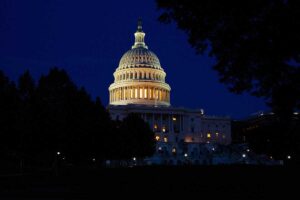The Importance of Staying on Top of International Business Regulations
On December 17 of last year, President Obama announced he was normalizing diplomatic relations with Cuba and re-opening an embassy in Havana. The announcement had a quick impact on U.S. regulations. On January 16, 2015, the U.S. Department of the Treasury, Office of Foreign Asset Controls (“OFAC”) published amendments to the Cuban Assets Control Regulations (“CACR”). These amendments reflect a significant relaxation of the now 50-year-old U.S. embargo of Cuba.
The January amendments to the CACR mean significant changes in U.S. – Cuban relationships.[1] Travel to Cuba will now be easier than before, and Americans engaged in approved travel can now spend money more freely in Cuba and even bring up to $400 of Cuban merchandise back to the U.S. with them. [2] However, the U.S. embargo of Cuba remains in place (only congress can lift it), travel to Cuba remains restricted to 12 specified purposes (education, artistic performances, religious trips, etc.), and travelers must keep records of their trips (including itineraries) for five years.
Most importantly for small and mid-market businesses, exports of U.S.-origin goods to Cuba remain heavily restricted. It appears likely that export restrictions will eventually be relaxed, but there is currently no timetable for those changes and no hint as to what form the new regulations will take.
The changes in U.S. policy toward Cuba serve as a prime example of how quickly change can come in the arena of U.S. international business regulations. The announcement of normalized diplomatic relationships followed 18 months of secret meetings. Just shy of one month after the President announced the policy change, new regulations took effect. This kind of rapid and wholesale regulatory change presents significant challenges for U.S. businesses.
The normalization of U.S.-Cuban relations was not, however, the only example in the last year of how quickly tides can change in international business. Back in February 2014, Russian forces began moving into the Crimean region of Ukraine. On March 6, 2014, President Obama issued an Executive Order[3] decrying Russia’s actions and authorizing sanctions against persons threatening the peace, security, stability, sovereignty, or territorial integrity of Ukraine. Additional Executive Orders issued on March 16[4] and March 20, 2014[5], authorizing expanded sanctions against Russian government officials and individuals and entities in targeted sectors of the Russian economy (such as financial services, energy, and mining).
Acting pursuant to the President’s Executive Orders, OFAC issued new sanctions and regulations on July 16, 2014, which were then expanded on August 6, again on August 13, and again on September 12, 2014. Most recently, President Obama issued an Executive Order[6] on December 19, 2014, which resulted in OFAC publishing additional restrictions on the same day.
The U.S. sanctions aimed at Russia and Ukraine prohibit U.S. companies from doing any sort of business with numerous specified companies and individuals and further restrict U.S. companies from exporting many goods and services for use in the Russian oil and gas sector. However, U.S. companies in many sectors continue doing business in Russia. To be successful, those companies will need a thorough understanding of the U.S. sanctions in place and will need solid business intelligence about the companies and individuals they are doing business with.
The rough seas of U.S. regulations relating to Cuba and Russia in 2014 and early 2015 should serve as a reminder to U.S. business owners that doing business overseas can be challenging, but that those challenges can be conquered with the right business intelligence. The ongoing relaxation of the U.S. embargo of Cuba will present both opportunities and pitfalls for American businesses. For companies doing business in Russia, 2014 represented a difficult year of ever-changing regulations. Given the current political situation in Crimea, Ukraine, and Russia, it appears unlikely that doing business in Russia is going to get any less complicated in the near future. Cuba and Russia both represent foreign markets for U.S. goods and services that carry significant risks. To manage those risks, a business owner has to know what to be on the lookout for, what questions to ask, and where to turn when the tides change.
[1] OFAC has published a “Frequently Asked Questions” page to address the changes to the CACR, which is available online at http://www.treasury.gov/resource-center/sanctions/Programs/Documents/cuba_faqs_new.pdf.
[2] Alcohol and tobacco products cannot constitute more than $100 of this amount, and the items must be brought back for personal use only, not re-sale. Americans are still prohibited from buying Cuban-origin goods over the internet or from third parties. In short, the only legal way for an American to buy Cuban cigars or rum is to travel to Cuba (for an approved purpose), buy up to $100 of the items in Cuba, and bring them back with them to the U.S.
[3] E.O. No. 13660.
[4] E.O. No. 13661.
[5] E.O. No. 13662.
[6] E.O. No. 13685.





